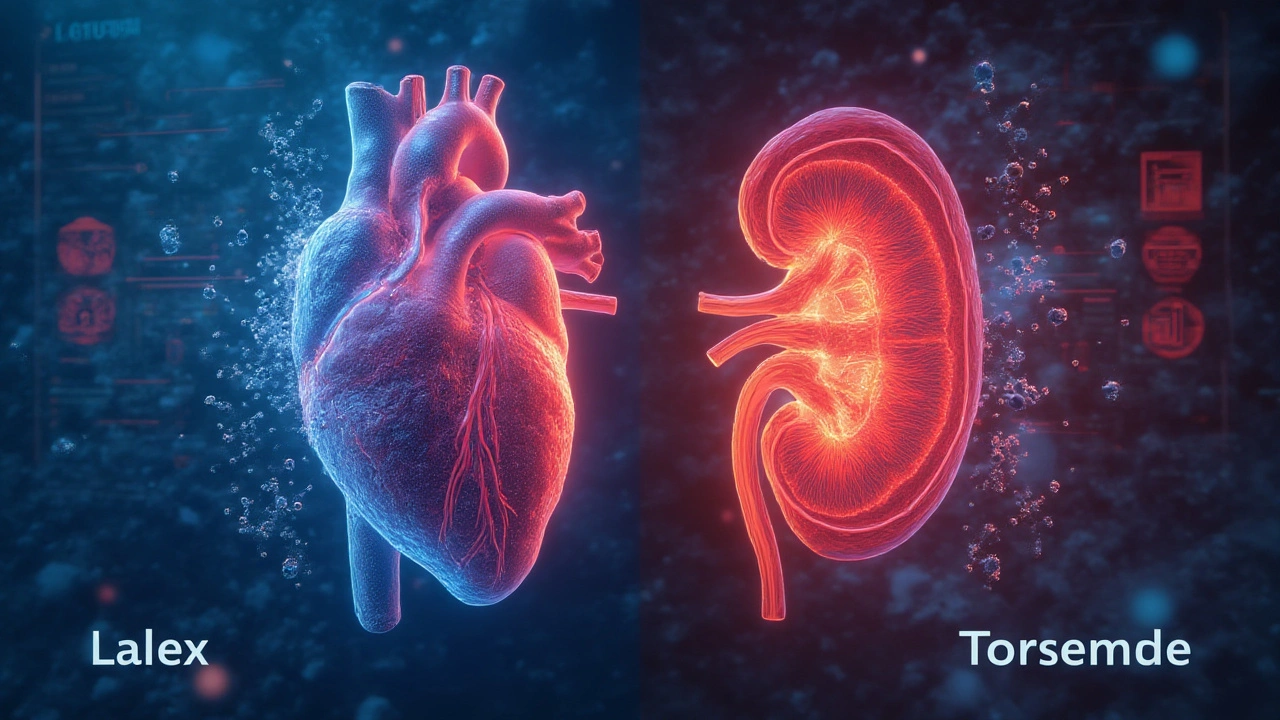Torsemide: What It Does and When You Need It
Torsemide belongs to the loop diuretic family. It tells your kidneys to dump extra water and salt, which reduces swelling and eases pressure on your heart. Doctors usually prescribe it for heart failure, high blood pressure, or kidney problems that cause fluid buildup. If you’ve ever been told to take a “water pill,” chances are it was torsemide.
How Torsemide Works and When It’s Used
When you take torsemide, it blocks a channel in the loop of Henle, a part of the kidney. This blockage stops sodium and chloride from being reabsorbed, so more fluid leaves your body through urine. The result is lower blood volume and less strain on the heart and blood vessels. You’ll feel less swelling in your ankles, legs, or abdomen, and your blood pressure may drop to safer levels.
Typical situations where tortorsemide shines include:
- Congestive heart failure with fluid retention
- Persistent hypertension that doesn’t respond to other meds
- Kidney disorders that cause edema
Doctors may choose torsemide over other diuretics because it lasts longer and works well even if you have reduced kidney function.
Dosage, Side Effects, and Safety Tips
Dosage varies a lot. For adults, doctors often start with 5–10 mg once a day, then adjust based on how you respond. Some people need 20 mg or more, but never double the dose without checking your doctor. Always follow the prescription label and never skip doses unless told to do so.
Common side effects are mild and include:
- Dizziness or light‑headedness, especially when standing up quickly
- Increased urination, sometimes up to 4–5 times a day
- Low potassium (hypokalemia) – you might feel weak or have muscle cramps
More serious problems are rare but can happen. Watch for severe dehydration, sudden weight loss, or a rapid heartbeat. If you notice dark urine, swelling in your eyes, or a rash, call your doctor right away.
Here are practical safety pointers:
- Check your potassium levels regularly; your doctor may suggest a supplement or a potassium‑rich diet.
- Stay hydrated, but don’t over‑drink. Too much water can dilute electrolytes.
- Avoid NSAIDs (like ibuprofen) unless your doctor says it’s okay—they can mess with torsemide’s effect.
- Tell your doctor about every other medicine you take. ACE inhibitors, lithium, and certain antibiotics can interact with torsemide.
If you’re buying torsemide online, stick to licensed pharmacies that require a prescription. Look for pharmacy credentials, read customer reviews, and never pay for a drug that seems too cheap – it could be counterfeit.
In short, torsemide is a powerful tool for controlling fluid overload and high blood pressure. Use it exactly as prescribed, keep an eye on electrolyte balance, and stay in touch with your healthcare provider. With the right precautions, you can manage symptoms and feel steadier day to day.






